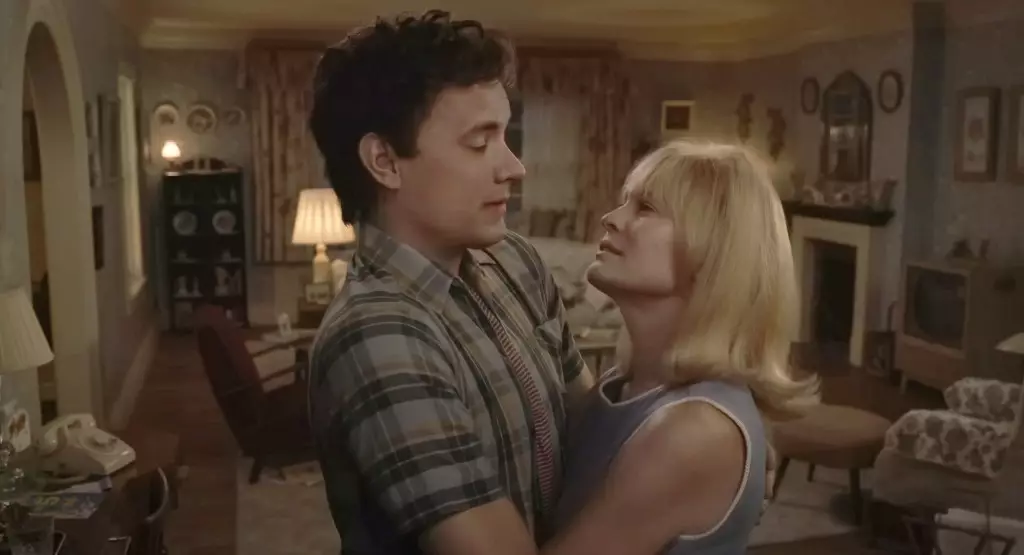Robert Zemeckis has long been heralded as a pioneer in filmmaking, deftly blending technological innovation with compelling storytelling. His filmography showcases a penchant for clever narrative devices that push the boundaries of cinematic experience. From the groundbreaking animated live-action fusion in “Who Framed Roger Rabbit?” to the poignant historical interlacing in “Forrest Gump,” Zemeckis’s work has historically resonated with audiences and critics alike. However, his latest endeavor, “Here,” raises questions about the balance between technological ambition and narrative substance, presenting a case study in how innovative ideas can sometimes overshadow the story itself.
Zemeckis’s recent film, “Here,” which brings together notable talents such as Tom Hanks and Robin Wright, struggled to find its footing at the box office. Critics were less than impressed, awarding it a dismal 36% on Rotten Tomatoes, while audience reactions mirrored this sentiment with a B- CinemaScore. The film’s premise—focusing on a multi-generational family drama confined to a single location—seemed overly ambitious, yet lacked the warmth that characterized Zemeckis’s earlier masterpieces. The characters, trapped in the mundanities of a dead-end marriage and middle-class concerns, lacked the engaging escapism often found in Zemeckis’s most beloved works.
As seen with prior films like “Welcome to Marwen” and “The Walk,” Zemeckis’s ventures have sometimes fallen prey to the very technologies that were meant to elevate the story. These films faced similar fates: innovative techniques failed to compensate for weak narratives, resulting in disappointing box office outcomes. “Here” appears to follow suit, launching with a meager $5 million opening, a far cry from the successes of Zemeckis’s earlier films.
Compounding the film’s struggles is the question of financial backing and distribution. “Here” was primarily financed through foreign sales, with Miramax co-owner Paramount choosing not to distribute the film domestically. This oversight becomes critical when considering the challenges of marketing a distinctly American story without a solid domestic groundwork. Zemeckis himself acknowledges the influence of former Miramax Head Bill Block, praising his vision for the project, yet the film’s road to the screen was fraught with difficulties.
Sony eventually stepped in to distribute the film, yet the marketing strategy posed notable challenges. With a moody tone that lacked punchy sellable clips, the film struggled to gain traction in a crowded cinematic landscape. The marketing campaign ingeniously leaned on the star power of Hanks and Wright, invoking nostalgia through a visual design reminiscent of “Forrest Gump.” However, it ultimately seemed a thin veneer over a complex and subdued narrative that left audiences wanting more.
Zemeckis’s fascination with innovation reflects in the execution of “Here.” His choice to tell a story from a fixed viewpoint—a thematic technique inspired by Richard McGuire’s graphic novel—serves as a metaphor for the passage of time. Yet, despite the artistic ambition, audiences may find it difficult to engage with a narrative that feels more like an experiment than an emotionally resonant film.
This latest attempt at storytelling invites scrutiny regarding the filmmaker’s trajectory. Zemeckis has successfully tackled formidable risks in the past, as seen with “The Polar Express,” which, despite an initial lukewarm reception, went on to achieve remarkable financial success in its Christmas niche. This history suggests that ambition can sometimes bear fruit, if not immediately, at some point in a film’s lifecycle. However, “Here” raises questions that highlight a potential miscalculation in balancing innovation with narrative coherence, leaving the future of Zemeckis’s storytelling aspirations in a precarious position.
As Zemeckis reflects on his latest project, the duality of innovation—a prized quality in filmmaking—emerges as both a tool and a potential hindrance. It is clear that while technological advancements evoke excitement among filmmakers and audiences alike, the essence of effective storytelling cannot be overlooked. The film industry thrives on the connection between viewers and compelling narratives, and when that connection falters, even the most innovative projects can falter.
“Here” stands as a testament to the intricacies of modern filmmaking. It represents both the remarkable vision of Robert Zemeckis and the significant challenges that accompany ambitious projects. The film indicates that while technological marvels can enhance cinematic experiences, they must be lovingly woven into rich tapestries of narrative that resonate with audiences’ hearts, lest they be relegated to the annals of misunderstood cinematic endeavors.


Leave a Reply